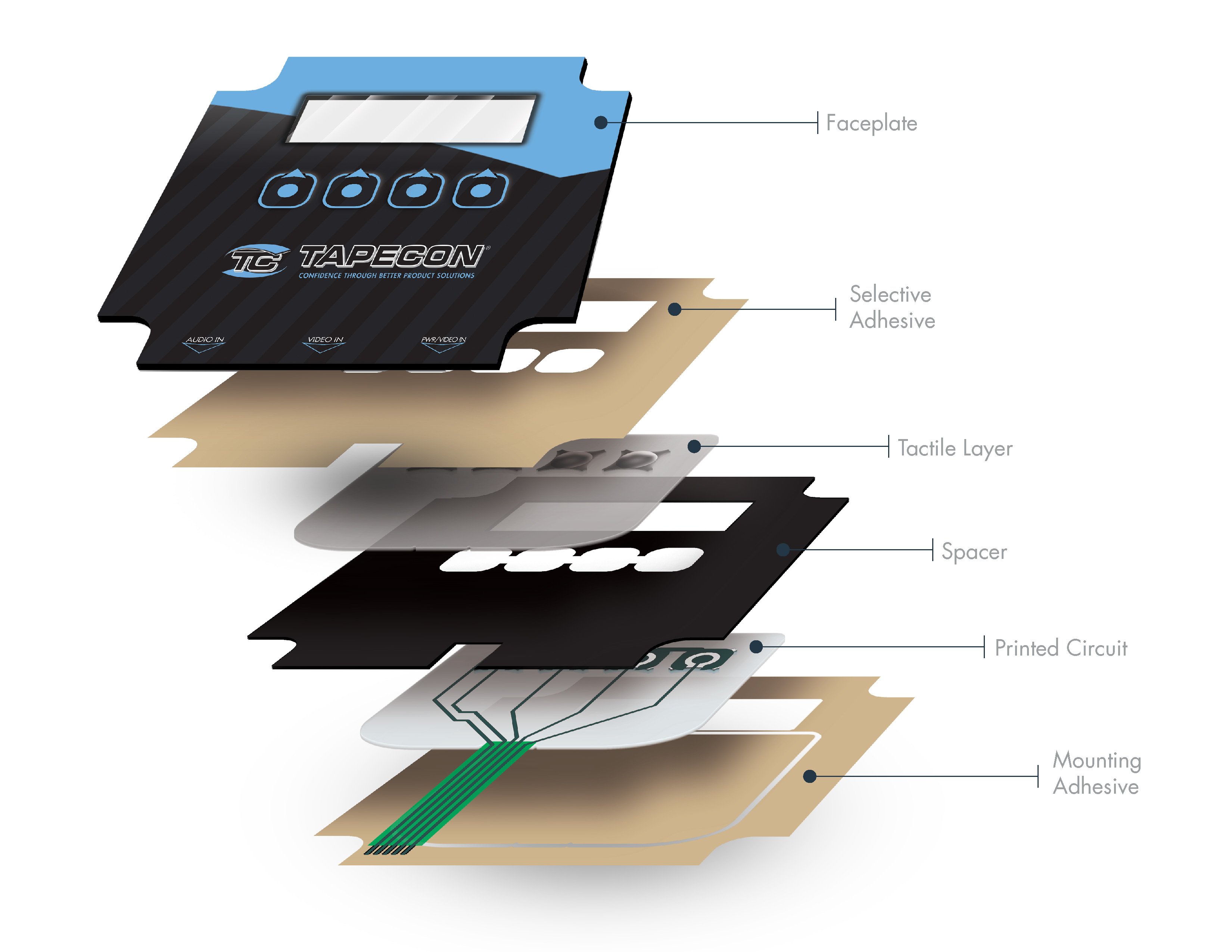How a Membrane Switch Improves Individual Experience and Gadget Effectiveness
How a Membrane Switch Improves Individual Experience and Gadget Effectiveness
Blog Article
Understanding the Performance of Membrane Layer Switches for Interface Tools
The capability of membrane layer switches stands for a considerable improvement in customer interface layout, combining efficiency with visual versatility. As markets increasingly prioritize user experience, comprehending the nuances of membrane button modern technology ends up being essential.
What Are Membrane Layer Switches?
Membrane layer switches are innovative user interface gadgets that facilitate user communication with digital equipment. These flexible parts contain numerous layers, consisting of a graphic overlay, spacer, and a published circuit layer. The layout enables a seamless combination right into various electronic tools, improving both the visual and functional facets of interface.
Membrane buttons are commonly used in a large range of applications, from household appliances to commercial equipment and medical devices. Their building and construction commonly features a thin profile, making them a perfect option for portable styles. The responsive responses given by these switches can be engineered to fulfill specific customer preferences, ensuring efficient communication in between the user and the device.
Sturdiness is another considerable benefit of membrane buttons, as they are immune to dust, wetness, and chemicals, which enhances their life-span popular settings. Additionally, these switches can be customized in terms of form, dimension, and visuals design, permitting branding and user-specific features. In general, membrane changes represent a useful solution for enhancing user experience in digital gadgets, incorporating capability with aesthetic appeal in an efficient manner.
Just How Membrane Switches Work
Operating on a simple concept, membrane switches use a split construction to register customer input efficiently. Each button consists of several layers, consisting of a printed circuit layer, a spacer layer, and a top graphic layer, which are designed to function together effortlessly. When a customer presses the leading layer, it compresses the spacer layer, bringing the conductive elements of the circuit layer right into contact with each other.
This call produces a shut circuit, indicating the gadget to perform a specific function. The layout permits various arrangements, including responsive responses, which can improve the user experience by supplying a physical experience upon activation. The products utilized in membrane buttons typically include adaptable substrates, such as polyester or polycarbonate, which make certain sturdiness and durability versus wear and tear.

Secret Advantages of Membrane Switches

An additional substantial advantage is their density. Membrane layer buttons are thin and lightweight, which enables makers to save room in their tools without giving up capability. This function is specifically beneficial in applications where weight and quantity are essential considerations.
Additionally, membrane buttons are resistant to dust, dampness, and chemicals, boosting their sturdiness. This strength extends their life-span and decreases the requirement for constant replacements, leading to cost savings with time.
Additionally, the tactile responses supplied by membrane buttons can be optimized to improve customer interaction. They can consist of attributes such as elevated buttons or distinct clicks, improving use and individual experience.
Applications Across Industries
Interface gadgets utilizing membrane layer switches are prevalent in a broad variety of industries, showcasing their adaptability and capability. Membrane Switch. In the medical field, membrane buttons are important to devices such as diagnostic equipment and patient surveillance systems, where their longevity and simplicity of cleansing are essential for keeping hygiene requirements. In the automotive market, these buttons are employed in control panel controls and infomercial systems, giving a sleek and modern-day interface for customers.
Additionally, the customer electronics field gain from membrane layer switches in appliances and handheld devices, where small style and straightforward user interfaces improve customer experience. Industrial applications also leverage membrane changes for control panels in machinery and automation systems, stressing their robustness and resistance to extreme settings.
In the aerospace and defense index industries, membrane layer switches are used in cockpit controls and tools, where reliability and efficiency under severe problems are vital. Additionally, the gaming industry visite site progressively includes membrane layer switches in controllers and gallery devices, contributing to an appealing individual experience. Generally, the convenience of membrane switches over enables their prevalent use across many fields, highlighting their value in modern-day individual interface design.
Future Patterns in Membrane Layer Change Technology

Additionally, the usage of advanced products, such as polycarbonate and polyester films, is expected to increase, providing enhanced toughness and resistance to ecological stress factors. These materials add to the total longevity of membrane layer switches, making them appropriate for harsher commercial applications.
Additionally, the incorporation of wise innovation, consisting of IoT connection, will allow membrane layer switches to connect with other tools and systems, helping with a more interactive individual experience. This fad lines up with the growing need for wise gadgets across numerous sectors, from medical care to consumer electronic devices.
Lastly, customization choices are prepared for to broaden, enabling suppliers to create bespoke solutions tailored to certain user needs and choices. These growths will place membrane switches as get redirected here essential parts in the development of interface modern technology.
Conclusion
Finally, membrane switches represent a critical innovation in interface innovation, using a trustworthy and versatile service for diverse digital applications. Their layered building and construction helps with small style, while attributes such as tactile feedback enhance individual communication. The sturdiness against ecological variables additionally strengthens their energy across numerous markets. As advancements in material scientific research and touch picking up technologies continue, the capability and applicability of membrane buttons are expected to broaden, enhancing their value in contemporary electronic devices.
Report this page